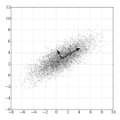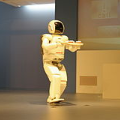Robotic tactile sensing provides a method of recognizing objects and their properties where vision fails. Prior work on tactile perception in robotic manipulation has frequently focused on exploratory procedures (EPs). However, the also-human-inspired technique of in-hand-manipulation can glean rich data in a fraction of the time of EPs. We propose a simple 3-DOF robotic hand design, optimized for object rolling tasks via a variable-width palm and associated control system. This system dynamically adjusts the distance between the finger bases in response to object behavior. Compared to fixed finger bases, this technique significantly increases the area of the object that is exposed to finger-mounted tactile arrays during a single rolling motion (an increase of over 60% was observed for a cylinder with a 30-millimeter diameter). In addition, this paper presents a feature extraction algorithm for the collected spatiotemporal dataset, which focuses on object corner identification, analysis, and compact representation. This technique drastically reduces the dimensionality of each data sample from 10 x 1500 time series data to 80 features, which was further reduced by Principal Component Analysis (PCA) to 22 components. An ensemble subspace k-nearest neighbors (KNN) classification model was trained with 90 observations on rolling three different geometric objects, resulting in a three-fold cross-validation accuracy of 95.6% for object shape recognition.
翻译:机器人触觉感知先前在机器人操作中的触摸感知工作经常侧重于探索程序(EPs)。然而,由人启发的人工操纵技术可以在EPs的一小部分时间里收集丰富的数据。我们建议简单的3-DOF机器人手设计,通过可变双向手相及相关控制系统优化用于物体滚动任务。这个系统动态调整手指基之间的距离,以应对物体行为。与固定的手指基相比,这一技术大大增加了在一次性滚动运动中暴露在指架触动阵列中的物体面积(在30毫米直径的圆柱体中观测到超过60%的数据)。此外,本文为所收集的色调模模模模模模数据集提供了一种特征提取算法,重点是对象角识别、分析和压缩表示。与固定的手指基地相比,这一技术大大增加了每个数据样本的维度,从10x1500时间序列数据到80个在一次性滚动运动动作阵列阵列中暴露在手指动作阵列阵列阵列阵列阵列阵列阵列阵列的物体的面积面积面积面积面积面积面积范围(经培训后,以 95度分析为三度的磁段),该技术进一步降低了了35度的磁段。



